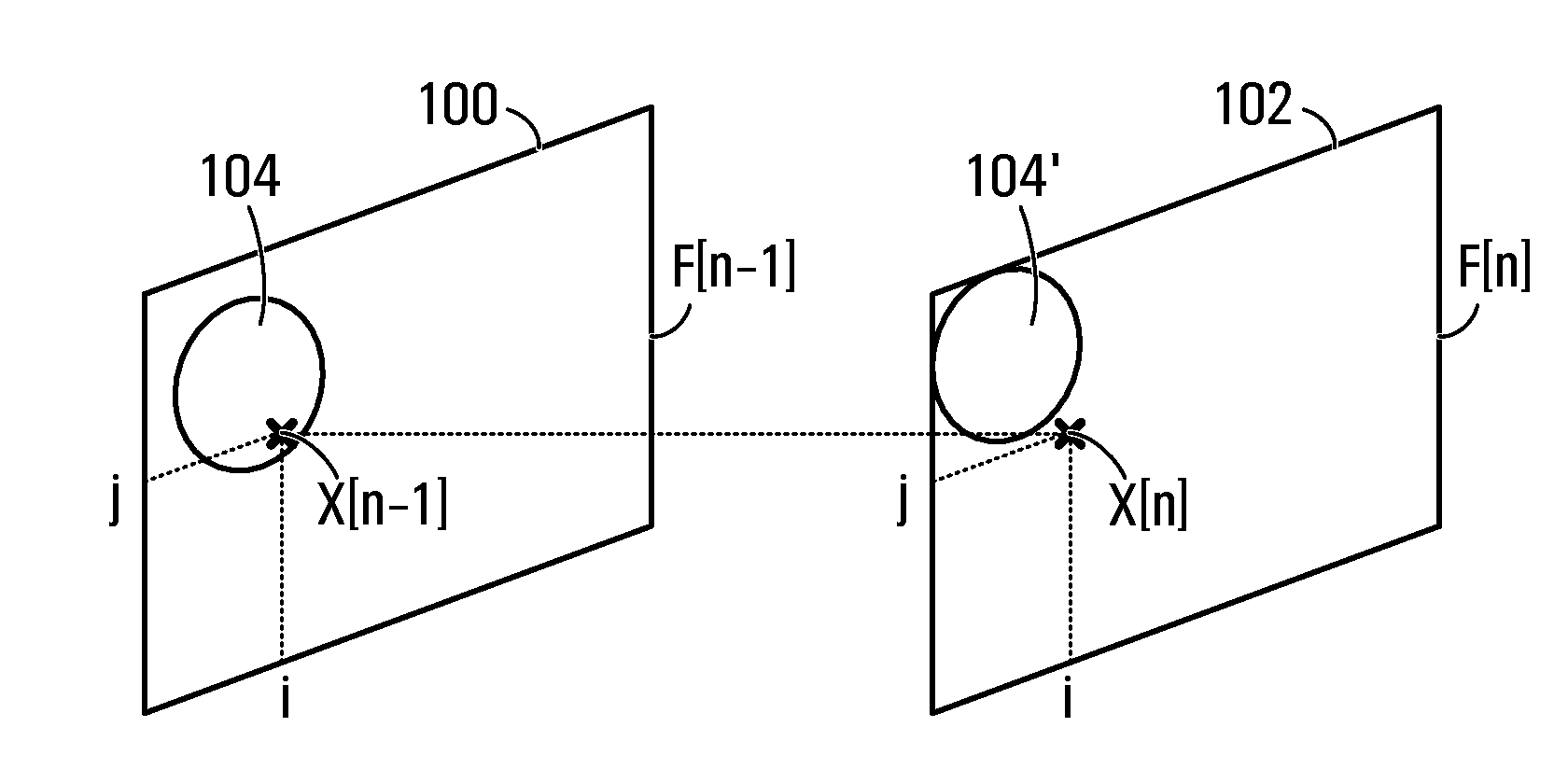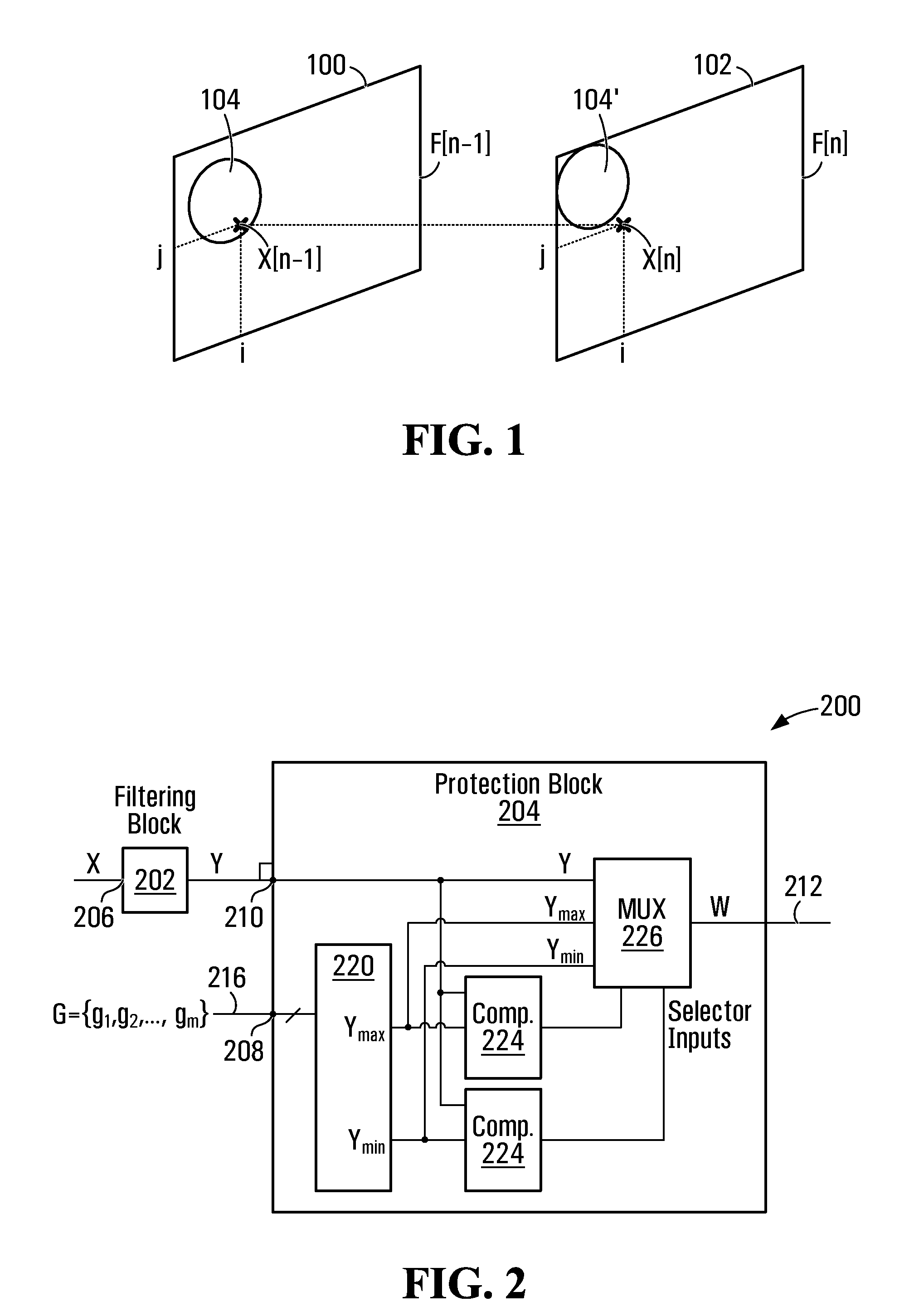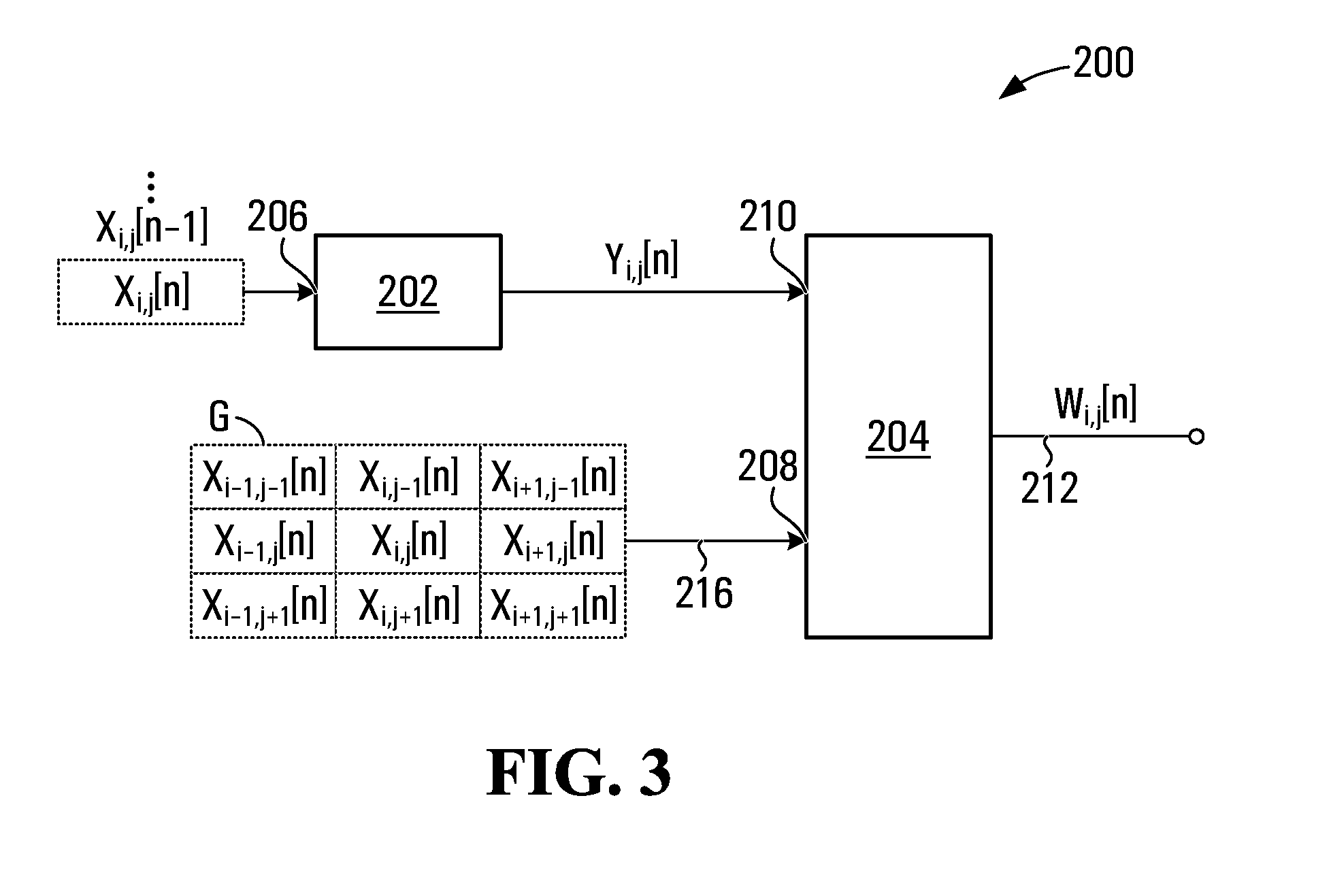Protection filter for image and video processing
a protection filter and video processing technology, applied in image enhancement, image analysis, instruments, etc., can solve problems such as motion artifacts, motion artifacts, and known temporal reduction filters, and achieve the effect of limiting distortion and mitiring motion artifacts and static artifacts
- Summary
- Abstract
- Description
- Claims
- Application Information
AI Technical Summary
Benefits of technology
Problems solved by technology
Method used
Image
Examples
Embodiment Construction
[0026]The use of conventional filters for temporal and spatial filtering of video input is known. Both finite impulse response (FIR) filters and infinite impulse response (IIR) filters may be used for temporal as well as spatial filtering.
[0027]Unfortunately however, the use of conventional filters in image processing presents difficulties. As noted, conventional filtering aimed at temporal noise reduction can lead to motion and / or static artifacts. Motion artifacts are caused by the blending of pixels representing different objects during the filtering process. For an object in motion, pixel locations associated with the object in a current frame, may be associated with another object or a background within the succeeding or preceding frame. This is because a moving object may shift positions from one frame to another. Combining or blending pixels from different frames that correspond to different objects, during filtering typically results in motion blur or a motion artifact.
[0028...
PUM
 Login to View More
Login to View More Abstract
Description
Claims
Application Information
 Login to View More
Login to View More - R&D
- Intellectual Property
- Life Sciences
- Materials
- Tech Scout
- Unparalleled Data Quality
- Higher Quality Content
- 60% Fewer Hallucinations
Browse by: Latest US Patents, China's latest patents, Technical Efficacy Thesaurus, Application Domain, Technology Topic, Popular Technical Reports.
© 2025 PatSnap. All rights reserved.Legal|Privacy policy|Modern Slavery Act Transparency Statement|Sitemap|About US| Contact US: help@patsnap.com



